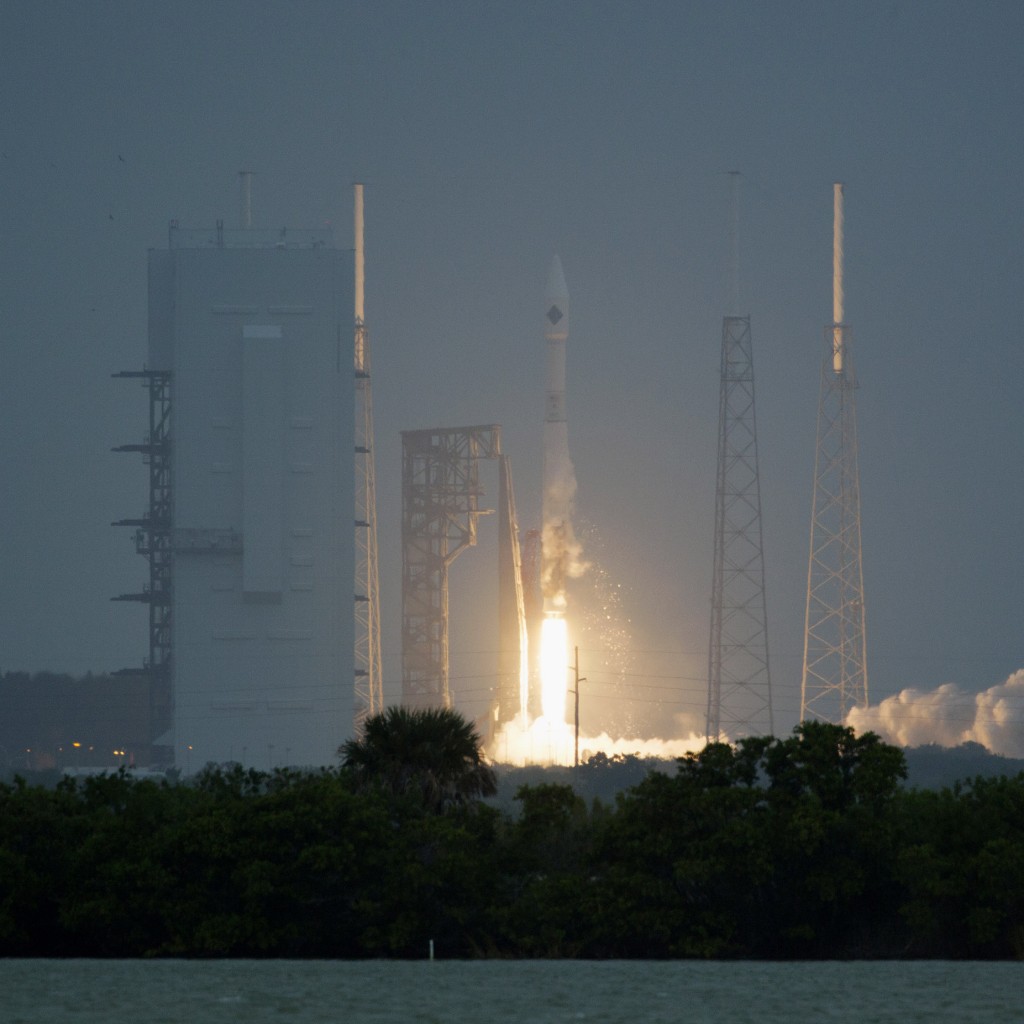
United Launch Alliance announced Friday afternoon it was postponing its next rocket launch from Cape Canaveral — one set to carry a military satellite — because of an engine-burn problem that occurred during Tuesday night’s rocket launch.
Tuesday’s launch, of an Atlas V rocket, successfully boosted an Orbital ATK spacecraft into orbit for what is called the OA-6 mission. That Orbital ATK Cygnus capsule is on track to dock with the International Space Station Saturday and deliver more than 7,700 pounds of supplies and equipment.
But something went wrong Tuesday between the time the Atlas V successfully cleared the launchpad at Cape Canaveral Air Force Station, at 11:05 p.m., and when the Cygnus broke free and powered away into orbit on its own, 21 minutes later. The first-stage engine shut off prematurely, and the second stage engine ran a little longer than usual to make up for it, ULA spokeswoman Lyn Chassagne said in a statement provided to FloridaPolitics.com.
As a result, the next Atlas V launch, which was set for May 5, carrying the MUOS-5 satellite for the Navy and Air Force, will be delayed at least a week.
“The Atlas V carrying the MUOS-5 mission for the U.S. Navy and the U.S. Air Force has been delayed to no earlier than May 12 to further review the data anomaly experienced during the OA-6 mission. The delay will allow additional time to review the data and to confirm readiness for the MUOS-5 mission,” United Launch Alliance announced in a statement issued Friday. “The MUOS-5 spacecraft is secure at the payload processing facility. ULA successfully delivered the OA-6 Cygnus spacecraft to the International Space Station (ISS) on March 22.”
The Atlas V has been the most reliable rocket available for such missions. In 62 launches since 2002, it has never failed. By contrast, the other rockets commonly used by NASA and the U.S. military, SpaceX’s Falcon 9 and Orbital ATK’s Antares, as well as Russia’s Progress spacecraft, all have had spectacular mission failures in the past two years.
“ULA successfully launched and deployed the OA-6 Cygnus spacecraft into the required orbit. The Centaur burned for longer than planned,” Chassagne stated. “The team is evaluating the occurrence as part of the standard post-flight data analysis. Following successful spacecraft separation, Centaur performed a disposal burn. The Atlas V’s robust system design, software and vehicle margins enabled the successful outcome for this mission. As with all launches, we will continue to focus on mission success and work to meet our customer’s needs.
“The ULA engineering team is reviewing the data to determine the root cause of the occurrence,” she continued. “The first stage cutoff occurred approximately 6 seconds early; however the Centaur was able to burn an additional approximately 60 seconds longer and achieve mission success, delivering Cygnus to its required orbit.”
There were reports early Wednesday morning — and questions were raised of ULA and NASA at a post-launch news conference — about a second-stage Centaur rocket burn that appeared to go longer than planned. Officials had dismissed the matter at the news conference. Yet late Thursday Space.news.com first reported the company was concerned and evaluating the engine burn timing issues.


